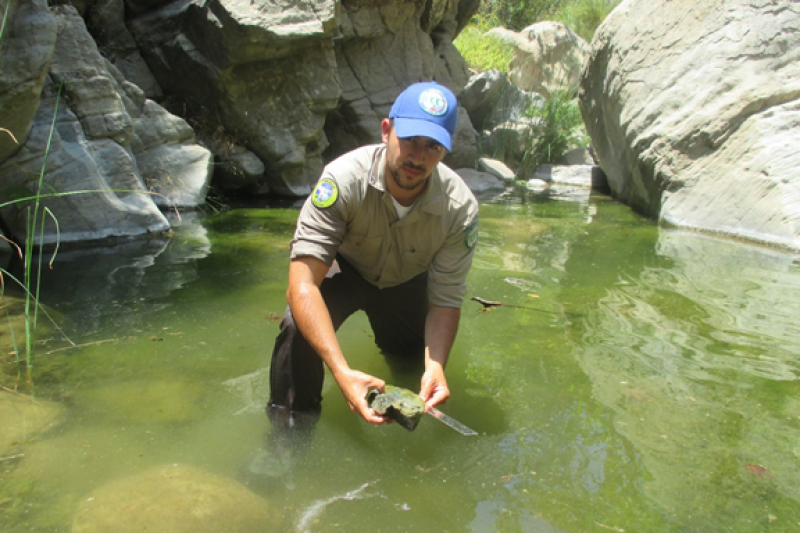The “experience of a lifetime”—that’s how one veteran described his participation in one of two NOAA Fisheries partnerships employing post-9/11 veterans in habitat restoration and monitoring work on the West Coast. The NOAA Veterans Conservation Corps Fisheries internship program in Washington and NOAA Fisheries Veterans Corps Fisheries Program in California support veterans with training, job skills, and mentoring. They also help us achieve our recovery goals for threatened and endangered salmon and steelhead.
Salmon and steelhead are born in rivers and streams, then journey to the ocean as juveniles. They return to the same rivers and streams where they were born to spawn, often covering long distances. Veterans in the programs improve fish populations by removing barriers like dams and culverts, and restoring instream habitat. Additionally, they help monitor fish populations and distribution, and which habitats they are using.

Veteran Barney Boyer and mentors from the Mukilteo Science Lab monitor sediment and vegetation in Washington's Snohomish Estuary.
The internship program in Washington is a thriving partnership including NOAA Fisheries and Washington’s Department of Veterans Affairs/Veterans Conservation Corps. Our first intern in Washington, Barney Boyer, assisted a research team at the Mukilteo Science Lab near Everett, Washington. They tracked sediment deposition and vegetation trends at the Snohomish Estuary. Once a thriving estuary where juvenile salmon would come for food and shelter, it was channelized in the past for farming. With local, state, and tribal partners, we restored hundreds of acres of the estuary back to its historical state. and Barney helped monitor the project’s success.

Veteran Xavia Jackson educates the public about the benefits of shade trees along the Putah Creek in California.
In California, Veterans Corps members like Xavia Jackson work throughout the state on habitat restoration programs. One of Xavia’s projects developed native plant identification cards for a community outreach and education event in Putah Creek, a tributary to the Sacramento River in Central Valley, California. This effort ensures chinook salmon and steelhead have shaded stream habitat for their long journeys to and from the Pacific Ocean.

Veteran Rob Slack preps boulders to be lifted by helicopter into the Carmel River estuary.
Also in California, Rob Slack assisted with installation of of large habitat structures like boulders and logs into the Carmel River estuary. He first helped to build them, then guided their placement in the estuary by helicopter. These structures will provide valuable rearing habitat to threatened steelhead by giving young fish better opportunities to grow, which helps increase their survival when they migrate out to the ocean.

Veteran Xavia Jackson (top right) and coworkers prepare vegetation for planting along the Putah Creek in California.
These are just a few of many veteran interns and Corps members who served and protected our country, and now continue to serve and protect the environment. NOAA works with local, state and federal partners to get them involved in critical fish passage and monitoring work up and down the West Coast. We also recruit mentors from many local restoration partner organizations and the Mukilteo Science Lab, U.S. Forest Service, California Conservation Corps, California Department of Fish the Wildlife and Washington’s Veterans Conservation Corps. Together we are helping to provide meaningful experiences and career training for the latest generation of veterans and helping recover salmon and steelhead populations for the future.



